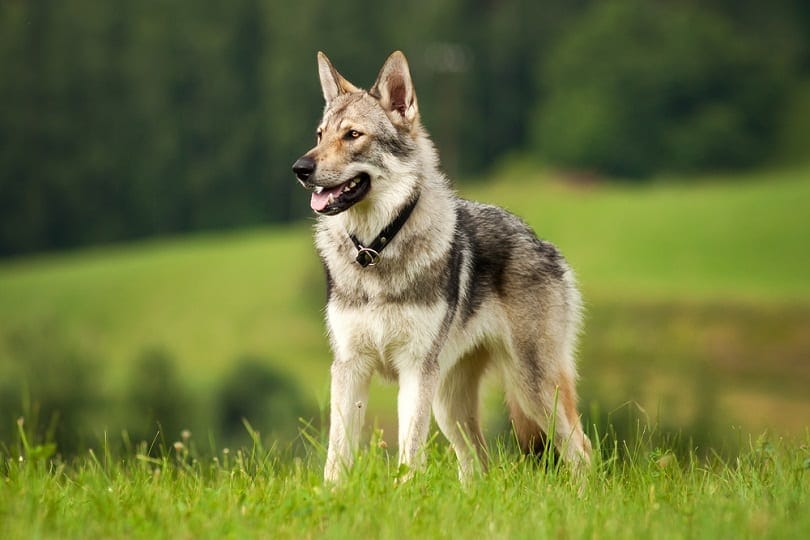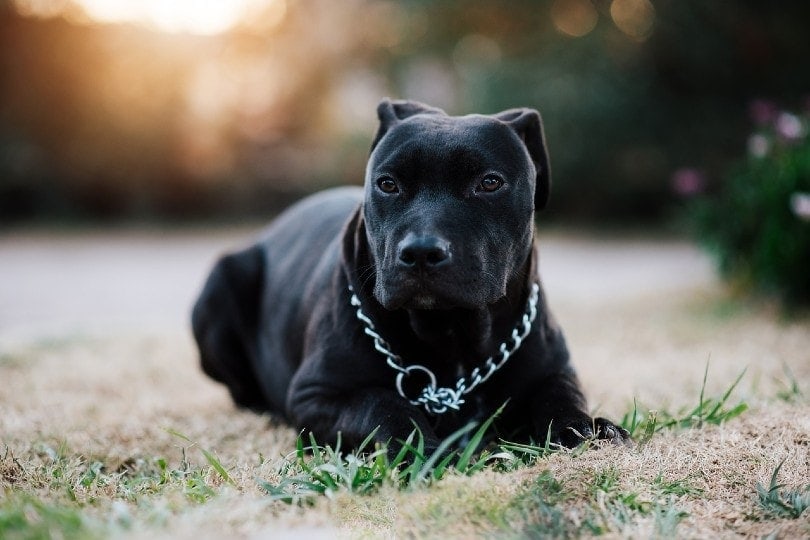How Big Do Newfoundland Dogs Get? Average Weight & Growth Chart
Updated on

The Newfoundland Dog breed is well-known for its intelligence, sweet nature, and laid-back disposition. However, the breed is also known for its massive size. The Newfoundland is one of the largest dog breeds in the world. They can reach 100 to 150 pounds and up to 28 inches long when fully grown.
If you’re considering giving one of these amazing dogs a forever home, you need to know everything you can about the breed, including how quickly they grow, when they stop growing, and any factors that will affect their growth. After all, you want your furry friend to be happy and healthy in its new forever home.
Newfoundland Dogs Breed Overview

The Newfoundland is a strong working dog that was developed to assist fishermen and farmers. Many Newfoundlands work in water rescue operations because the dogs are powerful swimmers and love to swim.
You can expect your Newfoundland Puppy to grow quickly and reach 100 to 150 pounds when fully grown. They usually stand between 26 and 28 inches tall and have a life expectancy of between 9 and 10 years.
This dog also makes an excellent guard dog, not because it is aggressive, but because of its size. Very few people will want to invade your property or try to hurt your family with this massive dog on watch.
Newfoundland Dogs Size and Growth Chart
You can expect your Newfoundland Puppy to weigh between 15 to 17 pounds at 8 weeks old and be 8 to 10 inches long. Your dog will grow steadily from 8 weeks to 24 months, where it should top out at between 115 to 150 pounds.
Of course, every dog is different, even a Newfoundland, so you’ll need to keep an eye on your dog’s weight to ensure it’s growing properly. If you feel that your Newfoundland isn’t big enough or is too large, it’s best to make an appointment with your vet for the animal to be evaluated.
| Age | Weight Range | Length Range |
| 8 weeks | 15 to 17 pounds | 8 to 10 inches |
| 10 weeks | 19 to 22 pounds | 9 to 11 inches |
| 12 weeks | 23 to 27 pounds | 11 to 15 inches |
| 6 months | 50 to 60 pounds | 19 to 21 inches |
| 10 months | 85 to 90 pounds | 23 to 26 inches |
| 12 months | 103 to 110 pounds | 25 to 28 inches |
| 24 months | 100 to 150 pounds | 26 to 28 inches |
When Does a Newfoundland Dog Stop Growing?
Most Newfoundland Dogs will reach full growth by the time they are 2 years of age. This is the point where you can consider your dog to have reached its full size. The Newfoundland can continue gaining weight after 2 years of age, but it’s rare. You want to keep your Newfoundland at the ideal weight, but there are a few factors to consider.

Factors Affecting the Size of Newfoundland Dogs
Nutrition, genetics, and any health problems the dog might have can affect its size. The environment your dog is kept in can also make a difference in the dog’s size. For example, a dog that is not fed high-quality food and kept in a small pin or cramped environment is going to be much thinner and less healthy than a dog that is fed right and pampered.
By the same token, if you overfeed your Newfoundland, you’ll find that they can easily become obese, which also affects the size and health of your pet.
Ideal Diet for Maintaining a Healthy Weight
To keep your Newfoundland happy and at a healthy weight, you need to feed the dog high-quality, protein-filled dog food. It’s important that your dog’s diet is age-appropriate. You wouldn’t feed the dog the same amount of food as a puppy as you would when it’s a full-grown dog. You’ll also need to adjust the amount and type of food your Newfoundland eats when it’s a senior dog.
It’s best not to free-feed this breed, as they are massive and tend to overeat, which could lead to obesity. Instead, feed the dog two to three times a day with smaller meals. Make sure you take your Newfoundland on plenty of walks to help maintain a healthy weight.

How to Measure Your Newfoundland Dog
It’s best to measure a Newfoundland Dog from the shoulders to the buttocks for the length and then from the withers to the ground for the height. A fabric tape measure is much easier to use than a rigid one. The trick, of course, is getting the dog to stand still so you can get an accurate measurement.
If you feel that your measurement is off or that your dog isn’t where it should be in terms of average growth, you should make an appointment with your vet for a checkup. The vet can get an accurate measurement and give you advice if your pet needs to lose or gain weight.
Conclusion
The Newfoundland is a massive breed that is as gentle and sweet as it is big. You’ll want to keep a close eye on your furry friend to ensure it’s growing the way it should. Since these dogs are so massive, it’s best to keep a close eye on how much you feed them and ensure the dog gets plenty of exercise. A bored Newfoundland can become aggressive and destructive, so make sure you have plenty of time to spend with your furry friend before giving one a forever home.
Featured Image Credit: Pandas, Shutterstock











